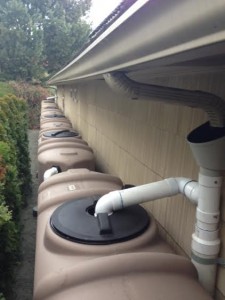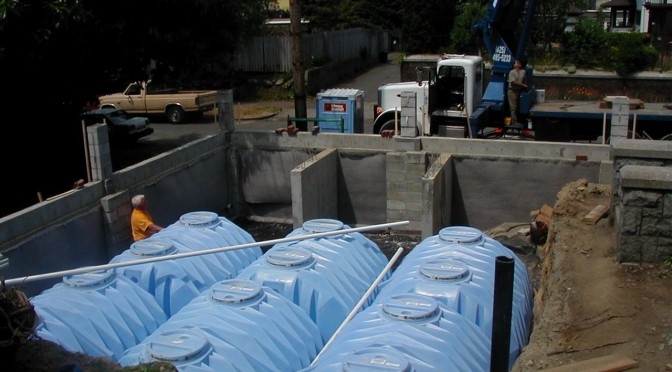 New stormwater regulations for runoff and green storm water infrastructure are adding to the costs of new residential and commercial construction in Seattle and elsewhere. Infiltration of runoff from roofs, driveways, and all impervious surfaces are mandated by local and Federal agencies. While infiltration does help reduce storm water runoff, the added costs of implementing infiltration or a rain garden can be considerable, with no return on investment for the home owner or building’s owner.
New stormwater regulations for runoff and green storm water infrastructure are adding to the costs of new residential and commercial construction in Seattle and elsewhere. Infiltration of runoff from roofs, driveways, and all impervious surfaces are mandated by local and Federal agencies. While infiltration does help reduce storm water runoff, the added costs of implementing infiltration or a rain garden can be considerable, with no return on investment for the home owner or building’s owner.
By directing costs of designing and implementing an infiltration system or rain garden to a rainwater collection system, the builder can mitigate stormwater runoff to a useful purpose. Irrigation, toilet, laundry facility, and whole house (potable) usage can be supplied by rainwater collection, storage, and use, lowering monthly water and sewer bills.
The Seattle times recently reported on rate increases over the next 5 years for water and sewer, to meet the challenges of expansion and repairs to an aging infrastructure. Approximately 6.2 billion dollars are expected to be needed over the next 20 years for expansion and repairs to the existing infrastructure in the Puget Sound region as a whole.
 While the average monthly billing increases are not enough to pay for a rainwater catchment system, the costs of designing and implementing an infiltration system or a rain garden are significant enough that if redirected to designing and building a rainwater collection system along with lower water and sewer bills, a homeowner or building owner will recognize a return on investment.
While the average monthly billing increases are not enough to pay for a rainwater catchment system, the costs of designing and implementing an infiltration system or a rain garden are significant enough that if redirected to designing and building a rainwater collection system along with lower water and sewer bills, a homeowner or building owner will recognize a return on investment.
A well designed and implemented rainwater harvesting system for toilet and laundry facility for a single family residence can save 49% of their city water usage with a small amount of storage. Using the available water from roof runoff rather than just infiltrating it into the ground makes a lot more sense and has a return on investment.

